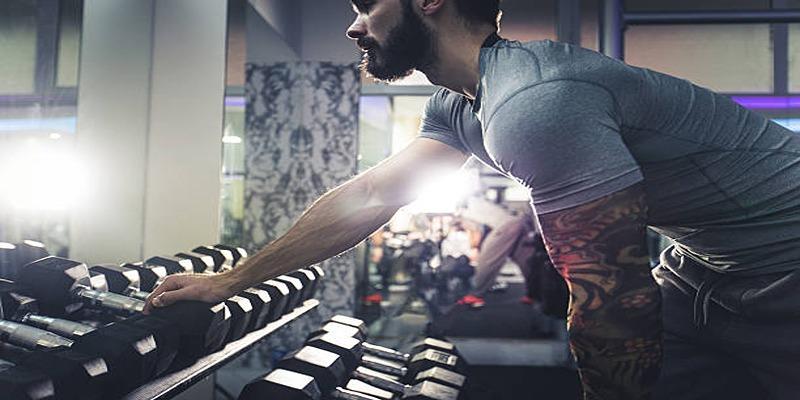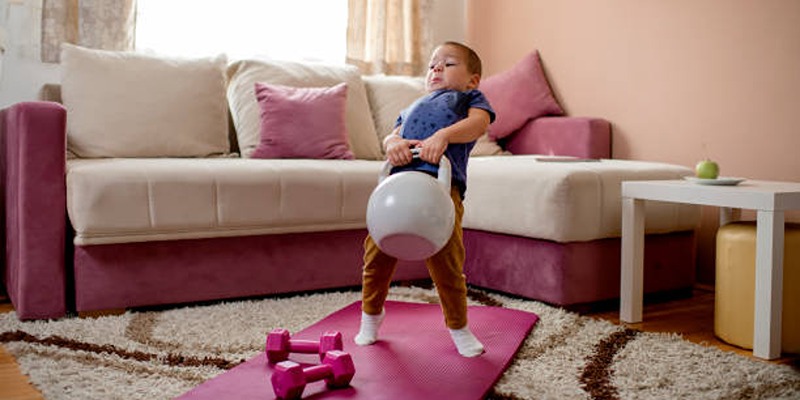Exercise equipment is one of the most effective means that can be used to achieve certain fitness and health goals, nevertheless exercising facilities hold certain risks which have to be preventively distinguished when exercising. Indeed, even with simple equipment such as treadmills, walking or running machines, and weight lifting equipment, faults due to misuse or lack of maintenance lead to minor injuries to severe accidents. Usually they are as a result of inadequate knowledge of the equipment, or disregard of safety precautions.
1. The Importance of Proper Form to Avoid Injuries
Using exercise equipment improperly is one of the leading causes of workout-related injuries. Whether you’re working with free weights, machines, or resistance bands, maintaining correct posture and technique is essential for both safety and effectiveness.
- Weight Machines: Incorrectly adjusting weight machines to fit your body can place undue strain on muscles and joints.
- Free Weights: Lifting free weights without proper preparation or guidance can result in muscle strains, tendon injuries, or even joint dislocations.
- Cardio Equipment: Poor posture while using treadmills, ellipticals, or stationary bikes can lead to pain in the back, knees, or hips.
2. Warm Up Before Using Exercise Equipment
Warming up is a crucial step before starting any workout. Jumping straight into intense exercises without preparing your body can increase the risk of muscle strains or tears. A proper warm-up boosts blood flow to your muscles, enhances flexibility, and reduces the likelihood of injury.
- Treadmills & Bikes: Begin with a slow, steady pace for 5–10 minutes to ease your muscles into more vigorous cardio activity.
- Weightlifting: Use lighter weights and perform dynamic stretches to prepare your muscles and joints for heavier loads.
- Stretching: Stretching is key to preventing stiffness and improving flexibility. Opt for dynamic stretches before exercising to loosen up and static stretches afterward to cool down.
3. The Risks of Overloading Exercise Equipment

Overloading exercise equipment is a common mistake that can lead to serious, long-term health issues. Pushing machines or weights beyond your capacity places excessive strain on muscles, tendons, and ligaments, increasing the risk of injury. Whether it's loading a leg press with too much weight or attempting a chest press beyond your strength level, overloading can do more harm than good.
- Resistance Machines: Always respect the recommended weight limits.
- Cardio Machines: Using excessive resistance or speed on machines like ellipticals can cause joint pain or cardiovascular strain, particularly for beginners or individuals with pre-existing health conditions.
4. The Importance of Equipment Maintenance and Inspection
Maintaining exercise equipment is a crucial yet often overlooked aspect of safety, whether you’re working out at home or in the gym. Regular inspections and upkeep can prevent accidents caused by faulty or worn-out parts. Prioritize these steps to ensure your equipment is safe and functional:
- Inspect for Wear and Tear: Check resistance bands, cables, handles, and weight plates for any signs of damage.
- Keep It Lubricated: Machines like treadmills require proper lubrication to ensure smooth operation.
- Clean Regularly: Properly clean all equipment, especially in shared gym spaces, to prevent the spread of bacteria and fungi.
5. Wearing the Wrong Footwear with Exercise Equipment
The right footwear is crucial when using exercise equipment. Wearing unsuitable shoes can hinder your performance and significantly increase the risk of injury.
- Treadmills and Running Machines: Opt for running shoes with proper cushioning and support.
- Weightlifting: For weightlifting, choose shoes with a flat, stable base and strong ankle support to protect your joints and ensure proper form when handling heavy loads.
- Cross-Training: Activities like jumping, lateral movements, or agility drills require cross-training shoes designed for flexibility and impact reduction, helping to prevent injuries.
6. Overexertion and Overuse Injuries
Pushing yourself too hard, too soon is a common mistake when using exercise equipment and can result in serious injuries. Overexertion often leads to overuse injuries such as tendinitis, stress fractures, and muscle strains. To prevent this, it’s crucial to listen to your body and respect your limits.
- Take Rest Between Sets: Allow your muscles adequate time to recover between sets to reduce the risk of strain.
- Prioritize Recovery: Incorporate active recovery days and cross-training into your routine to avoid overworking specific muscle groups.
- Stay Hydrated: Proper hydration is key to preventing dizziness, cramps, and fatigue, all of which increase the risk of accidents and injuries during exercise.
7. Using Exercise Equipment Without Proper Instruction
For beginners, improper use of exercise equipment can lead to injuries, especially when lifting weights or performing complex movements. If you're unfamiliar with a machine or workout tool, take the time to learn the correct techniques before diving in.
- Seek Professional Guidance: Consider hiring a personal trainer or joining a class to receive hands-on instruction. This can significantly lower the risk of injury and help you build confidence.
- Leverage Online Resources: Exercising at home? Turn to trusted online tutorials or video guides to master proper form and equipment use.
- Read Equipment Manuals: Always review the manual for any new equipment to understand its operation, safety features, and weight limits.
8. The Importance of Rest and Avoiding Overtraining
One of the most common mistakes in fitness is skipping rest days and overtraining. Pushing your body too hard without sufficient recovery can lead to overtraining syndrome, which weakens your immune system and increases the risk of long-term injuries. Rest is essential for muscle repair, growth, and overall performance.
- Prioritize Rest and Recovery: Build rest days into your workout routine and alternate between intense and lighter training sessions.
- Listen to Your Body: Pay attention to signs of fatigue, soreness, or pain during workouts.
9. Mastering Proper Breathing Techniques

Proper breathing is an often-overlooked yet critical aspect of exercise. Poor breathing habits can hinder your performance, cause dizziness, and even lead to fainting. Ensuring your muscles receive enough oxygen through correct breathing techniques will help you perform more efficiently and reduce unnecessary strain.
- For Weightlifting: Exhale during the exertion phase (e.g., while lifting a weight) and inhale during the lowering phase.
- For Cardio: Focus on maintaining a steady, rhythmic breathing pattern. Proper breathing will help you stay energized and avoid becoming winded too quickly during aerobic exercises.
Conclusion:
Exercise equipment can be a powerful tool to elevate your fitness journey, but safety must always come first. Whether you’re working out at home or in a gym, proper technique, routine maintenance, and listening to your body are key to avoiding injuries. Incorporating rest days, mastering breathing techniques, and taking precautions with children around equipment will ensure a safer and more effective workout experience.







